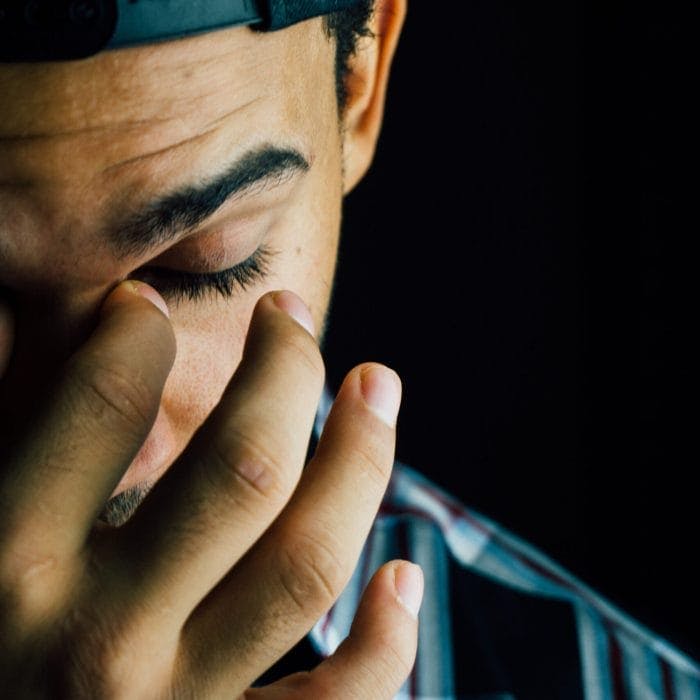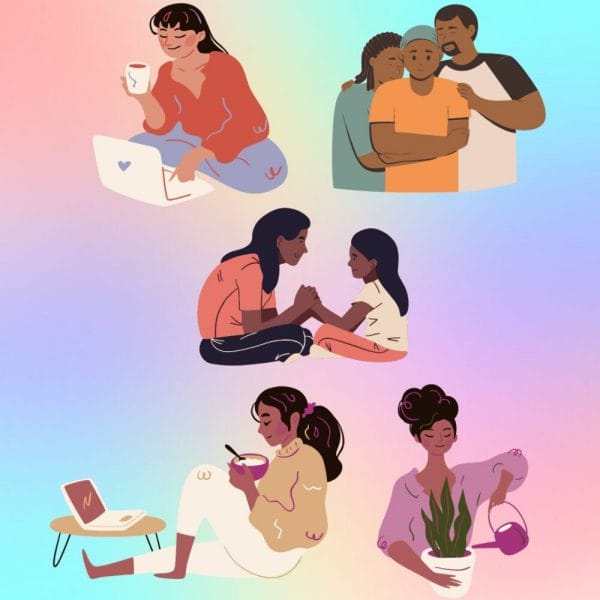An interview with adolescent psychologists, Drs. Jennifer Pfeifer, PhD and Joanna Lee Williams, PhD
In the field of adolescent health and well-being, racism isn’t usually the first thing you hear about.
At Hopelab, the advancement of mental health and well-being for BIPOC youth is central to our mission. We cannot approach this work without directly exploring racism and race-based inequities, their implications for how we understand adolescent development, and the action they demand. Such scientific inquiries aren’t always front and center in academic scholarship; whether by the hidden biases of research conventions or lost in the social determinants of health crowd, racism — and anti-Black racism in particular — is often quieted.
There is, however, a robust body of essential, generative research out there that centers racism and race-based inequities as key contextual and relational factors in adolescent development. In recent years, more scientists and scholars have been shining a light on this work.
Drs. Jennifer Pfeifer, PhD and Joanna Lee Williams, PhD are Co-Directors of the National Scientific Council on Adolescence (NSCA). This past August, the council published its inaugural report, The Intersection of Adolescent Development and Anti-Black Racism. In October, Joanna and Jenn sat down to talk with us about it.
In conversation with Hopelab
Jenn and Joanna talk about the mission of the NSCA, and dive into why anti-Black racism specifically needs to be highlighted in the understanding of adolescent development, the opportunities afforded by social tech, and how we translate knowledge to action.
This interview has been edited for length and clarity.
Hopelab: Thank you both so much for taking the time to talk to us today. Can you start by telling me about the National Scientific Council on Adolescence in general? What’s your mission?
Jenn: The National Scientific Council on Adolescence was formed in late 2019, but the Center for the Developing Adolescent was formed in 2015.
The council and the center work together to change the conversation about adolescence and improve outcomes for all adolescents. The council is a broad interdisciplinary group of U.S.-based researchers in adolescent developmental science, and one of our major goals is to provide actionable insights from the body of research about adolescent development that can then go to different audiences — policymakers, folks in youth-facing organizations or in other systems that have direct contact with youth.
We aim to be a trusted resource of integrated scientific information. So, if you want to know how something impacts adolescent development, we want to be the resource that people turn to from a scientific perspective.
Hopelab: Why was the council formed? What was the need that you were responding to?
Jenn: I think that when you look at the landscape of different stakeholders supporting youth development, there was a gap in terms of bringing the scientific knowledge to bear on these efforts — we don’t mean to say that we’re the only organization out there that cares about adolescents. There are so many groups in this space that have been doing amazing work.
The essential gap or opportunity that we saw was to help bring academic understandings to bear in a more applied sense.
You can have a lot of academics doing work that stays siloed in academia and does not get connected out. Part of our work is an attempt to build bridges with different organizations and different stakeholders where we say, “This is what we have to contribute, this is what the science says, and we want to make sure that information gets to you — and also, we want to partner with you and find out what you need to know.” Then we can bring that information back to the academic community and say, “Here are the needs, and we should be focusing on them in our research.”
So, we see this as a bidirectional relationship, and it’s just a whole host of bridges being made between different stakeholders in different arenas, where we’re all aligned with the same goal of supporting healthy youth development across this long period from ages 10 to 25.
Hopelab: You recently published the report, The Intersection of Adolescent Development and Anti-Black Racism. Can you talk about the scope of the report and why the focus is on Black adolescents in particular?
Joanna: I’ll start with why we focused on Black adolescents. One, the context of anti-Black racism and race-based inequities — which were part of the founding of this country and continue to persist — in some ways create a shared set of experiences among Black adolescents. We know that Black adolescents are a vastly rich and diverse group of young people. But if you are growing up in the United States, then you’re growing up in a society where racism exists, and anti-Black racism in particular.
We wanted to point to the idea that growing up in this context often necessitates developing ways to cope with racism and racial discrimination.
In our very first council meeting, which is a beautiful memory of being in-person at UCLA, back in February of 2020, literally weeks before everything shut down, we brainstormed a whole range of what some of our specialty topics could be. And then, that fall, we really honed in on: what do we want to prioritize in terms of our first report; where do we want to invest our energy?
Thinking about what happened in the spring and summer of 2020 with heightened national awareness — Black Lives Matter, and anti-Black racism, and police brutality — I think the pandemic allowed more space for people to pause and see and, you know, not be able to look away.
Bringing some of the science to bear on the topic of anti-Black racism and Black youth development was important.
In terms of the scope of the report, there’s a bit of clarification of terms, because we talk about interpersonal racism, institutional or systemic level racism; we talk about anti-Blackness or anti-Black racism as something that is particularly impactful for Black communities across the nation.
After setting that stage, we move into understanding: what do we know about basic adolescent developmental needs? Things like developing a sense of identity and belonging. Having opportunities for expressing and developing agency, and for exploration. We know these are basic developmental needs.
The driving question became how, then, do direct experiences or growing up in the context of racism intersect with those developmental needs and moments for Black youth?




